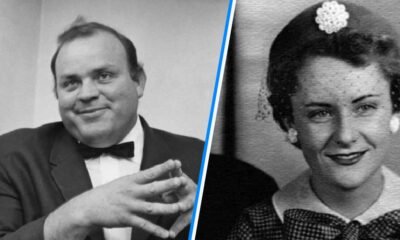Blog
1968 F250 Camper Special Master Cylinder Cap Gasket Replacement: In An Depth Exploration

Introduction: 1968 F250 Camper Special Master Cylinder Cap Gasket Replacement
The 1968 Ford F250 Camper Special stands as a hallmark of classic American trucks, celebrated for its robust build and exceptional functionality tailored for heavier loads and demanding drives. Among its critical components, the master cylinder cap gasket plays an indispensable role in the vehicle’s braking system. This article delves deep into the nuances of replacing the master cylinder cap gasket on a 1968 F250 Camper Special, a task crucial for ensuring the safety and reliability of the braking system. Covering from basic understanding to detailed step-by-step replacement instructions, this guide aims to provide comprehensive insights for both enthusiasts and professional mechanics.
Understanding the Master Cylinder Cap Gasket
Role and Importance
A master cylinder cap gasket is a small but vital component in your truck’s braking system. Positioned between the brake fluid reservoir and the master cylinder, this gasket ensures a tight seal, preventing brake fluid from leaking out and air or contaminants from entering the system. The integrity of this gasket directly influences the hydraulic pressure maintained within the braking system, which is crucial for effective brake operation. A compromised gasket can lead to reduced braking efficiency or even failure, posing significant risks to vehicle safety and performance.
Signs of a Failing Master Cylinder Cap Gasket
Recognizing the symptoms of a failing master cylinder cap gasket is key to preemptive maintenance that can prevent more severe issues. Key indicators include:
- Visible Leakage: If you notice brake fluid around the master cylinder cap, it’s a clear sign that the gasket may be failing.
- Spongy Brake Pedal: A brake pedal that feels softer than usual or requires more distance to engage can indicate air in the system due to a faulty gasket.
- Decreasing Brake Fluid Levels: Frequent need to refill brake fluid without obvious leaks elsewhere suggests a possible gasket issue.
- Unusual Noises During Braking: Any new or odd sounds when braking could be symptomatic of air bubbles, which can form due to a compromised gasket seal.
Preparing for Replacement
Tools and Materials Needed
The replacement of a master cylinder cap gasket requires a few basic tools and materials, to ensure you can perform the task efficiently and safely. You will need:
- A new master cylinder cap gasket specifically designed for the 1968 F250 Camper Special.
- Quality brake fluid is recommended for your model.
- Basic hand tools like a screwdriver and a wrench set.
- Gloves to protect your hands from brake fluid, which can be corrosive.
- Clean rags for wiping away any spills or debris.
Safety Precautions
Safety is paramount when working on vehicle brake systems. Before you begin, ensure the following:
- The truck is parked on a level surface and the parking brake is engaged.
- You are wearing appropriate safety gear, including gloves and safety glasses.
- Work in a well-ventilated area to avoid inhalation of fumes from brake fluid or cleaners.
Step-by-Step Replacement Guide
Accessing the Master Cylinder
The master cylinder is typically located on the driver’s side near the firewall. Begin by:
- Ensuring the engine is cool to avoid burns.
- Opening the hood and securing it safely.
- Locating the master cylinder for the brake system, which is directly connected to the brake fluid reservoir.
Removing the Old Gasket
- Cap Removal: Carefully unscrew the master cylinder cap. Be gentle to avoid spilling any brake fluid.
- Gasket Inspection: Remove the old gasket from the cap and inspect it for any signs of wear or damage. This will help you confirm if the gasket was the source of any leak or system issue.
Installing the New Gasket
- Surface Preparation: Clean the rim of the master cylinder reservoir and the cap thoroughly to ensure no debris or old gasket material remains.
- Gasket Placement: Align the new gasket perfectly with the cap to ensure an optimal seal. Incorrect placement can lead to leaks or air entry.
Reassembling and Checking for Leaks
- Cap Reinstallation: Screw the cap back onto the master cylinder, ensuring it is tight and secure.
- Leak Testing: After the cap is secure, visually inspect the area and check for any signs of leakage.
Read Also: Scott C Levin Fresno California Truck Rollover 2011: An In-depth Examination
Post-Replacement Procedures
Testing the Brakes
Before taking your truck back on the road, it is crucial to test the brakes to ensure they are functioning correctly:
- Start the engine and press the brake pedal several times to check for responsiveness.
- If the pedal feels firm and the brakes engage properly, the gasket replacement has likely been successful.
Ongoing Maintenance Tips
Maintaining the braking system of your 1968 F250 Camper Special is essential for ensuring longevity and reliability:
- Regularly check the brake fluid level and quality.
- Inspect the master cylinder and other brake components during routine maintenance or at signs of any braking issues.
- Replace the brake fluid as recommended by the manufacturer to prevent contamination and degradation, which can adversely affect the braking system.
Conclusion
The replacement of the master cylinder cap gasket on a 1968 F250 Camper Special is a crucial maintenance task that significantly contributes to the safety and effectiveness of the braking system. This detailed guide provides you with the necessary steps and precautions to ensure that your classic truck remains a reliable and safe vehicle. Regular maintenance, coupled with a keen observation of early signs of wear or failure, will help keep your F250 running smoothly and extend its lifespan.
FAQs About 1968 F250 Camper Special Master Cylinder Cap Gasket Replacement
What is the purpose of the master cylinder cap gasket in a 1968 F250 Camper Special?
The master cylinder cap gasket is crucial for maintaining the integrity of the brake system. It seals the brake fluid within the master cylinder and prevents contamination from dirt and debris, which can affect the braking performance.
How do I know if the master cylinder cap gasket needs replacement?
Signs that the master cylinder cap gasket may need replacing include visible brake fluid leakage around the master cylinder cap, a spongy or unresponsive brake pedal, and a noticeable decrease in brake fluid levels without obvious leaks elsewhere.
What tools will I need to replace the master cylinder cap gasket on a 1968 F250 Camper Special?
You will need a few basic tools such as a screwdriver to remove the master cylinder cap, a rag for cleaning, and gloves for protection. Having some brake fluid on hand in case you need to top up is also advisable.
Can I replace the master cylinder cap gasket by myself, or should I seek professional help?
If you are comfortable with basic vehicle maintenance tasks, you can replace the master cylinder cap gasket yourself by following a detailed guide. However, if you’re unsure or uncomfortable with the process, it’s wise to consult a professional mechanic.
How often should the master cylinder cap gasket be replaced on a 1968 F250 Camper Special?
There isn’t a set interval for replacing the master cylinder cap gasket as it depends on the condition of the gasket and the vehicle’s usage. It’s best to inspect the gasket regularly, such as during routine maintenance checks, and replace it if any signs of wear or leakage are evident.
What type of brake fluid should I use when replacing the master cylinder cap gasket?
For the 1968 F250 Camper Special, it is typically recommended to use DOT 3 brake fluid. Always check your vehicle’s manual or consult with a professional to ensure you are using the appropriate type of fluid for your specific model.
What are the risks of not replacing a faulty master cylinder cap gasket?
Failing to replace a worn or damaged master cylinder cap gasket can lead to brake fluid loss, reduced hydraulic pressure, and potential contamination of the brake system. This can significantly impair braking performance and may result in brake failure, posing serious safety risks.
After replacing the master cylinder cap gasket, what should I check for to ensure it’s functioning properly?
After replacement, check for any signs of leakage around the master cylinder cap. It’s also a good idea to test the brake pedal for responsiveness and firmness. If the pedal still feels spongy or if you notice further fluid loss, there might be additional issues in the brake system that require attention.
For More Information Visit Loopermagazine
-

 Celebrity1 year ago
Celebrity1 year agoWho Is Jordan Broad?: The Untold Story of Ashley Broad Husband
-

 Celebrity1 year ago
Celebrity1 year agoWho Is Mary Ryan Ravenel?: Inside The Life Of Thomas Ravenel’s Ex-Wife
-

 Celebrity1 year ago
Celebrity1 year agoWho Is Noelle Inguagiato?: The Untold Story Of Jesse Watters Ex-Wife
-

 Celebrity1 year ago
Celebrity1 year agoWho Is Dolphia Parker?: Everything About Dan Blocker’s Wife
















